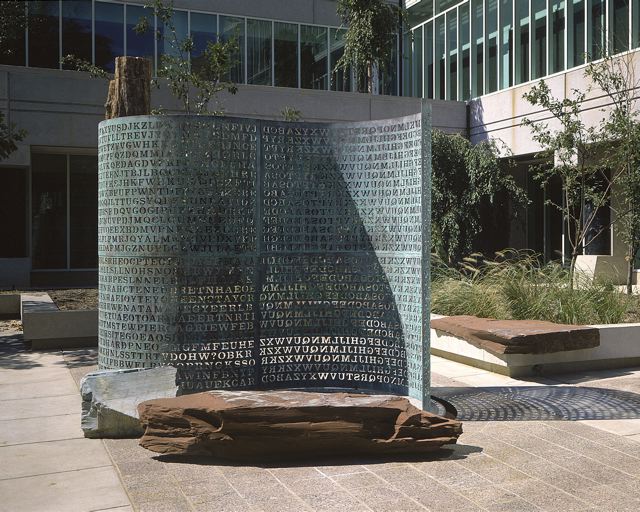Video game developer Elonka Dunin is a multilingual Wikipedia editor with a knack for cryptology. Photo by Suzy Gorman, freely licensed under CC BY-SA 2.5.
Elonka Dunin is an American video game developer and creator of cryptography websites about some of the world’s most famous unsolved codes.
Her cryptology work was cited on Wikipedia as early in 2005, leading her to contribute extensively on that topic. Since then, Dunin has written or substantially expanded over 500 articles. She has earned 24 barnstars for her contributions.
Dunin was born and raised in Los Angeles. Since she was a child, she was always interested in games, as her father was an avid gamer. According to Dunin, “he would program these large room-sized computers to play games with me, the little girl playing at the teletype machine, and he would also have gaming groups that would come by the house and this was of course before computer games.”
Dunin started her video game career at Simutronics in St. Louis in 1990, and worked there until 2014. Then she moved to Tennessee to co-found a new games studio, Black Gate Games. Attending gaming conventions led Dunin to a new passion: cryptology.
At one of the Dragon Con conventions in Atlanta, she was intrigued by a challenge to solve a cryptology code for a contest organized by PhreakNIC. “They’re handing out flyers with the code, and they’re saying that there’s a prize for the first solver,” she said. “I saw that code, and I just got obsessed with it.” Over the course of ten days, Dunin solved the puzzle and won a trip to a hacker convention.
Over the years, her cryptology skills developed so much that some conventions have banned her from competition. When an Atlanta hacker conference released a code challenge a few years ago, the instructions included this note: ‘Note: Past code crackers are ineligible for prizes associated with solving the @LANta.con2 puzzle; give someone else a chance, Elonka’’!

Kryptos is an encrypted sculpture at CIA headquarters in Langley, Virginia. Photo by Jim Sanborn, free licensed under CC BY-SA 3.0.
During a visit to Washington DC, Dunin came across Kryptos, an encrypted sculpture by American artist Jim Sanborn, located on the grounds of the Central Intelligence Agency (CIA) in Langley, Virginia. She was so inspired by her experience that she created a website about this unusual sculpture. Kryptos features four separate, enigmatic messages — only three of which have been solved.
The website changed her life, as she received many questions about Kryptos and its codes — and responded to as many as she could, on her own and other sites.
Around 2005, Dunin noticed that her sites were getting links from something called Wikipedia. She followed the links back to learn about the growing encyclopedia, which intrigued her — and she began making her own edits. One of her first experiences was controversial, as one editor advised her to edit her own biography, other editors said she shouldn’t, and this led to a rapid education in community policies and attitudes towards conflicts of interest. Despite this initial setback, Dunin has become an active and respected editor, contributing to a wide range of articles on Wikipedia over the years.
One of Dunin’s projects has been to try to piece together the bits and pieces of her family genealogy and heritage. Her father, Stanley Dunin, was a war orphan: both of his parents were killed in Poland in September 1939 during the German invasion, while other family members were arrested and sent to Auschwitz. “Wikipedia has been a good source for my research,” she said, “as I have been learning about some of my more famous relatives, especially from the Polish szlachta (noble/gentility) classes.”
Dunin has found Wikipedia to be a diverse and engaging community. Her experience editing and creating articles has been both inspiring and motivating.
“I have gained new skills by working on Wikipedia. I have grown as a person by working on Wikipedia. I have helped other people by working on Wikipedia. I have been a part of an amazing global phenomenon.”
Profile by Andrew Sherman, Digital Communications Intern, Wikimedia Foundation
Interview by Matthew Roth, former Communications Manager, Wikimedia Foundation

Can you help us translate this article?
In order for this article to reach as many people as possible we would like your help. Can you translate this article to get the message out?
Start translation
